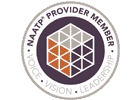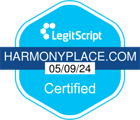Employee Assistance Program (EAP) for Addiction & Rehab
Last Updated August 16, 2025
What is an Employee Assistance Program?
An Employee Assistance Program, often called an EAP, is a benefit that many employers provide to support the overall well-being of their employees. It offers confidential services that can help employees manage personal or work-related problems. Common services include short-term counseling for stress, anxiety, depression, or relationship issues, resources for substance abuse or addiction, financial and legal guidance, and referrals to outside professionals when needed. The purpose of an EAP is to give employees access to help early on so challenges do not negatively affect their health, job performance, or work-life balance.
Statistics & Data About EAPs
- About 70.9 million U.S. workers had access to an EAP in 2021.
- Access varies by employer size: 27 percent at very small employers, 46 percent at small, 66 percent at medium, and 83 percent at large private employers.
- Access has steadily increased over time, with small employer access growing from 14 percent in 1999 to 37 percent in 2021.
- EAPs typically cost employers $12 to $40 per employee annually, often less than one-third of one percent of total healthcare spending.
- For every $1 spent on EAP counseling, employers save an estimated $5 to $16 in benefits and reduced costs.
- Federal EAPs commonly support addiction issues by providing confidential counseling, referrals to treatment, and education as part of drug-free workplace programs.
How Does an EAP Work?
An Employee Assistance Program works by giving employees confidential access to professional support services provided through a third-party organization or directly by the employer. When an employee is facing personal or work-related challenges, they can contact the EAP directly, usually through a phone line, online portal, or in-person sessions.
The process typically begins with an initial consultation where the employee explains their concerns. Depending on the situation, the EAP may offer short-term counseling, provide resources such as financial or legal advice, or make referrals to outside specialists for long-term care. Employers usually cover the cost of the EAP services, at least for the short-term support, which makes it free for employees to use.
Confidentiality is a key part of how an EAP works. The employer does not receive details about what the employee discusses, only general usage statistics to measure participation. This ensures employees can feel safe seeking help without fear of it affecting their job.
EAP & Addiction Treatment
An Employee Assistance Program can be an important first step for someone seeking help with addiction. When an employee reaches out to the EAP, they are connected with a counselor who evaluates their situation and provides guidance on treatment options. The EAP may offer short-term counseling sessions to address immediate concerns, but its main role is to connect the employee with specialized addiction treatment resources.
For addiction treatment, the EAP can refer employees to inpatient or outpatient rehab programs, detox centers, or support groups. In many cases, the EAP will also help coordinate care with the employee’s health insurance, making it easier to understand what treatment costs are covered. The program may provide ongoing support through check-ins and relapse prevention resources once treatment begins.
All of this is confidential, meaning the employer will not know the details of the employee’s addiction or treatment, only that the EAP services were accessed. This allows employees to get the help they need without fear of job repercussions, while also improving their chances of recovery and long-term success at work.
Benefits of EAP for Addiction Treatment
An Employee Assistance Program offers several important benefits for employees who are struggling with addiction and for the employers who provide the program.
For employees, an EAP gives confidential and stigma-free access to professional help. This can be the first safe step toward recovery, since the employee does not need to worry about their employer knowing details about their addiction. EAPs provide short-term counseling and connect employees with specialized treatment programs, detox services, and support groups. They often help employees navigate insurance coverage and find affordable rehab options, making it easier to start treatment quickly. Continued support, such as relapse prevention resources and follow-up counseling, also helps improve long-term recovery outcomes.
For employers, having an EAP reduces absenteeism, workplace accidents, and turnover that can occur when addiction goes untreated. Employees who receive help are more likely to return to work focused, healthy, and productive. EAPs can also save companies money by lowering healthcare costs and improving morale across the workplace.
Types of EAPs
There are several types of Employee Assistance Programs, depending on how they are structured and the services they provide:
- Internal EAP: Managed and staffed by the employer, with in-house counselors or specialists who provide direct support to employees.
- External EAP: Outsourced to a third-party provider. Employees access services through phone, online platforms, or in-person sessions. This is common for smaller companies or organizations without mental health staff.
- Hybrid EAP: Combines internal and external resources. Employers may have in-house counseling for basic needs while outsourcing specialized services such as addiction treatment or legal advice.
- On-site EAP: Provides regular access to counselors or specialists at the workplace, often on a scheduled basis.
- Telephonic or virtual EAP: Offers support entirely through phone or digital platforms, including video counseling, apps, or online resources.
- Specialized EAP: Focuses on specific employee needs such as substance abuse, mental health, financial wellness, or work-life balance programs.
Are There Eligibility Requirements for EAPs?
Eligibility for an Employee Assistance Program typically depends on employment status and the employer’s specific plan. The main points are:
- Employees: Most full-time and part-time employees are eligible, but coverage details may vary depending on the employer.
- Dependents and household members: Some EAPs extend access to immediate family members or household members, though this depends on the employer’s plan.
- Contractors or temporary staff: Eligibility is less common but may be offered in some organizations.
- Employment status requirement: Generally, you must be actively employed. Some programs continue limited access after termination or retirement for a short period, depending on the provider.
- Confidential access: Eligibility does not require a formal diagnosis or job performance issue—any employee can seek help voluntarily.
Essentially, most employees have automatic access to their employer’s EAP, and the goal is to make support available to anyone who might benefit.
Do Employee Assistance Programs Cost Money?
For employees, Employee Assistance Programs are generally free to use. Employers pay for the program, so employees can access counseling, referrals, and other services without any out-of-pocket cost.
From the employer’s perspective, EAPs do have a cost, typically ranging from $12 to $40 per employee per year depending on the provider, services offered, and company size. Some programs use a flat fee per employee, while others are based on usage or a monthly per-employee rate.
The key benefit is that employees receive confidential support without paying, while employers often see a return on investment through reduced absenteeism, improved productivity, and lower healthcare costs.
How to Set Up an EAP
Setting up an Employee Assistance Program involves several steps to make sure it is accessible, effective, and compliant. Here is a clear outline of how to establish one:
- Assess employee needs: Start by surveying or evaluating the workforce to identify the most pressing issues such as stress, addiction, financial struggles, or legal concerns. This ensures the program is tailored to real needs.
- Decide on program structure: Choose between an internal program (staffed by your own counselors), an external program (outsourced to a third-party provider), or a hybrid model that blends both. Smaller employers often prefer external providers because they are cost-effective and easy to implement.
- Select a provider: If outsourcing, research and contract with a reputable EAP vendor. Look for providers who offer counseling, addiction treatment referrals, financial and legal resources, and crisis management.
- Establish policies and procedures: Define what services will be covered, how employees will access the EAP, and how confidentiality will be maintained. Make sure policies comply with federal and state laws, including workplace safety and privacy protections.
- Communicate to employees: Launch the program with clear, ongoing communication so employees know it exists, how to access it, and that it is confidential. Use emails, posters, HR orientations, and management training to increase awareness.
- Train supervisors and managers: Provide guidance on how to recognize when employees may benefit from the EAP and how to make confidential referrals without stigma.
- Monitor and evaluate: Collect general usage data from the provider to assess participation, effectiveness, and return on investment. Use this feedback to adjust and improve the program over time.






